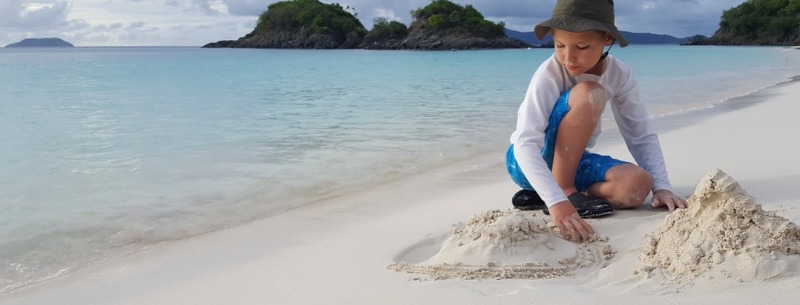2025 U.S. Virgin Islands Visitors Guide
Chill Caribbean culture, idyllic beaches, wild mountainous interiors, and balmy temperatures make the Virgin Islands one of the most popular destinations in the Caribbean. Made up of over one hundred islands, cays, islets, reefs, and rocks, the islands attract in excess of two million visitors a year for fishing, sailing, and spectacular snorkeling and diving.
Natural attractions aside, the colonial legacy, which has seen many flags flying over the islands in the past three hundred years (Dutch, French, Danish, British, and Spanish to name a few), has left some charming historic architecture, particularly in the towns of the United States Virgin Islands, together with atmospheric ruins of sugar plantations and a culture that is something of a melting pot.
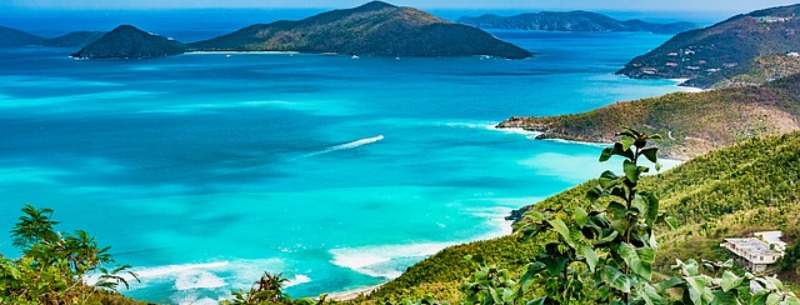
A territory of the USA, the US Virgin Islands (USVI) can, with its international cuisine, mini-shopping malls, and American-style amenities, initially seem rather too much like its big brother with the added advantage of duty-free shopping. But further exploration reveals the strong roots of West Indian culture, no more so than at Carnival time when the streets of St Thomas are overtaken with colorful costume parades, bands, and food stalls selling delicious creole food.
The British Virgin Islands (BVI) are less touched by tourism and the majority of visitors are yachters – the calm waters, gentle breezes, deep bays and short distances between anchorages have long made the BVI a sailing paradise.
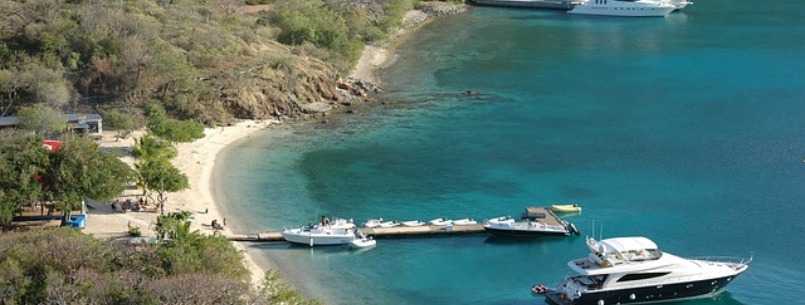
The mainstay of the economy in the Virgin Islands is tourism, though the USVI has a lucrative sideline in the Hess Oil Refinery and a reasonable manufacturing industry, while the BVI receives significant income from license fees paid by foreign companies taking advantage of the BVI’s tax exemptions.
Where to Go
Most visitors to the Virgin Islands head straight for St. Thomas, though it can feel overcrowded and familiar; more serene surroundings await on St. Croix and St. John, especially the latter, which offers excellent hiking.
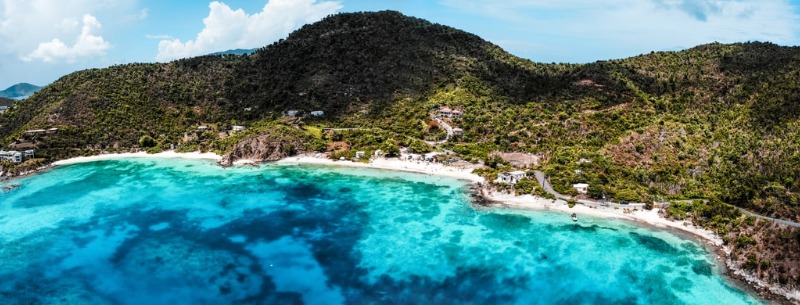
In the BVI, the main draws are the wondrous reefs and gorgeous beaches, along with myriad watersports and boating activities; Brewer’s Bay Beach in particular has excellent snorkeling, while the well-preserved wreck of the RMS Rhone off Salt Island is the highlight of any visit.
To the northwest, peaceful Virgin Gorda is home to the unusual natural attraction known as The Baths, colossal boulders surrounded by pools teeming with marine life.
When to Go
The Virgin Islands’ climate is subtropical, with temperatures ranging from 26°C to 31°C (79-89°F) in summer to 22°C to 28°C (72-82°C) in winter. Easterly trade winds keep the humidity low, with May and June the stickiest months.
Heavy rain is rare except during hurricane season (June-Nov) when most of the annual rainfall of 100mm arrives, though most of it is in the form of brief showers. The last major hurricanes to hit the Virgins, Hurricane Luis and Hurricane Marilyn, occurred within two weeks of each other in September 1995 and caused several billion dollars of damage.
Unsurprisingly, there are good deals to be had in hurricane season – November is the best because off-season prices are still in effect, yet the weather is often just as good as in December.
Getting There
The main gateway to the Virgin Islands is the Cyril E. King International Airport on St. Thomas, which handles direct flights from the US (American, Continental, US Air, and United among others) and flights from San Juan, Puerto Rico. There are also direct flights from the US to the Henry E. Rohlsen Airport in St Croix. Cape Air (tel 508/771/6944 or 1/800-352-0714, ) and American Eagle fly daily from San Juan to St Thomas.
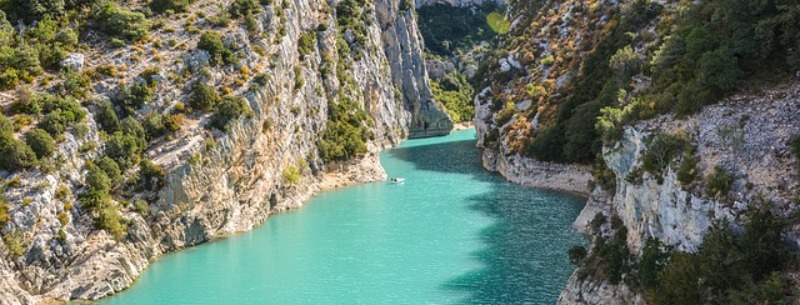
There are no direct flights to the BVI; you have to go via St. Thomas or San Juan – American Eagle, LIAT, and Air Sunshine all operate daily flights from San Juan to Tortola and Air St. Thomas flies from San Juan to Virgin Gorda.
Getting Around
Hopping from island to island is easy either by air or, more popularly, using the network of inter-island ferries. On the islands themselves, you can do much of your exploring on foot using taxis, rental cars, bikes, or boats for longer distances.
Tourist Information
All main towns in the Virgin Islands have tourist offices. The official agencies are the US Virgin Islands Department of Tourism ( ) and the BVI Tourist Board. Your lodgings may also be an excellent source of local information – resorts and large hotels, in particular, will often help guests (and sometimes non-guests) set up trips, car rentals, and activities, especially on the smaller islands without official tourist offices.
Outdoor Activities
The Virgin Islands are a paradise for almost any watersports you can imagine – diving, snorkeling, windsurfing, parasailing – as well as fishing, sailing, and hiking. See the individual island pages for details of companies offering anything from snorkeling day trips to weeklong sailing courses.
Fishing is a popular pastime on the islands – wahoo is hot from August to February, marlin from September to January, mahi-mahi from February to May, and tuna from November to January. However, note that the removal of any marine organism from BVI waters is illegal for non-British Virgin Islanders without a recreational fishing permit. Call the Fisheries Division at 284/494-3429 for information.
Best of the Virgin Islands
Magens Bay Beach, St Thomas
This half-mile-long stretch of powder on St. Thomas is consistently voted one of the best beaches in the world.
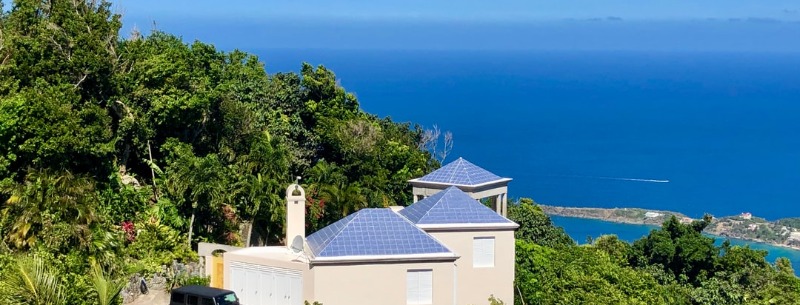
Jump-Up, St Croix
Catch this monthly street party in Christiansted for live music, dancing, stilt walkers, and lots of food.
The Baths, Virgin Gorda
Scramble through the grottoes, caves, and pools created by these out-size volcanic rocks.
Bomba’s Full-Moon Party, Tortola
Decadent bash presided over by the self-proclaimed king of Tortola.
Wreck of the RMS Rhone
View the haunting remains of Rhone at the bottom of Sir Francis Drake Channel.
Gorda Peak National Park, Virgin Gorda
Lush Preserve is strewn with unique flora and fauna and capped by the island’s 1370-foot peak.
Painkillers
The Soggy Dollar in White Bay is said to have invented these intense rum concoctions.
Food & Drink
Because the Virgin Islands have flown several flags during their history there is a rich culinary heritage combining Dutch, English, French, African, West Indian, and other influences. And while there’s plenty of fine international cuisine to be had, particularly on the larger USVI like St Thomas and St Croix, you should definitely try out the many wonderful West Indian dishes showcasing the best of Creole cuisine.
Generally speaking, you’ll pay around US$6-15 for a meal at a café or standard restaurant; and US$18-30 for an entrée at more upmarket places. The USVI has the full range of international cuisine; eating on the BVI you’re more likely to have to stick to West Indian food, with international dishes confined mainly to upmarket places or snack-style places serving sandwiches, burgers, and pizzas.
Restaurants
Restaurants often close for several hours between meals, generally, 3-5 pm, and many places close before 10.30 pm. As always you should reserve in popular places and call ahead for those in out-of-the-way spots to make sure they’re open. When it comes to dress, the BVI is a little more formal than most other islands. For any sit-down meal in a smart restaurant, men are advised to wear long trousers and a collared shirt.
West Indian Food
In the Virgin Islands, West Indian fare is the food of choice for locals. An average dish consists of spiced meats, lots of starches, and very few vegetables. Conch, a shellfish that has a similar texture and taste to squid, and goat, which is very similar to pork, are served in almost any way you can imagine. A popular dish that often sells out quickly is conch in butter sauce. Common side dishes include fried plantains and fungi, which are very similar to American stuffing.
Many fish and chicken dishes are served with fruit salsa or a coconut milk sauce. Spicy foods, such as foods rubbed with Caribbean curries or Jamaican jerk spices, are also popular. For a quick and inexpensive meal, locals grab a roti – meat, potatoes, carrots, and onions simmered in a creamy curry sauce and folded between warm flatbread, occasionally with some chutney on the side. Be careful when you eat a chicken roti because locals eat them with the bones.
Rum
In particular, Cruzan rum made on St Croix – is definitely the spirit of choice and rum punch is the most popular rum drink. Locals drink a mixture of two shots of dark rum, a teaspoon of sugar, and a splash of water. Virgin Island beers include Caribe (very similar to Corona), Foxey’s Lager, and Blackbeard Ale, but you can also get foreign beers like Red Stripe, Heineken, and Guinness.
History of the US Virgin Islands
Although there is some evidence that the Virgin Islands were populated by Amerindian tribes as far back as 1500 BC, the earliest tribe known to have settled here was the Igneri, the first wave of Arawaks, who arrived from South America in huge canoes, landing on St Croix sometime between 50 and 650 AD. The next wave of Arawaks – the Taíno – arrived around 1300; skilled in agriculture they set about farming the islands of St Croix, St John, and St Thomas only to be displaced in the early part of the fifteenth century by the aggressive warrior tribe known as the Caribs.
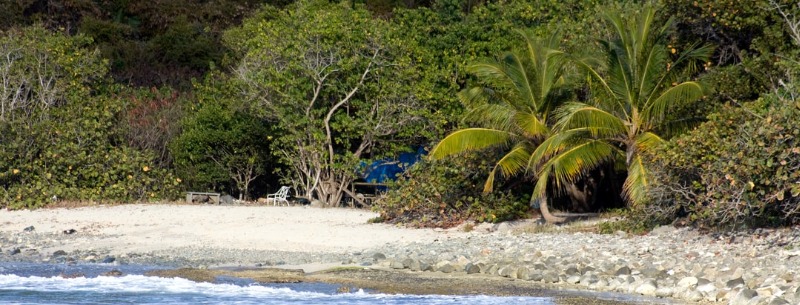
By the time Columbus set foot on the islands in 1493 during his second voyage, the Caribs were well established and the indigenous Arawak tribes had dwindled to a fraction of their original number. Columbus named the islands Las Virgenes , “the virgins” – their sheer number and pristine condition reminded him of the legend of St Ursula, a feisty fourth-century European princess, and her “army” of 11,000 virgins, who were raped and killed by a Hun prince and his henchmen. After the Spaniards pretty much wiped out the entire population of native peoples, the islands were safe for colonization and ripe for mass planting of sugarcane.
The first half of the seventeenth century witnessed a period of intense colonial squabbling with the British, Dutch, Spanish, and French establishing proto-colonies on various islands until the Danes interceded in 1666 and began their period of domination over the islands west of St John, while the English gained control of the eastern section of islands. The Danes are credited with developing their islands into some of the busiest ports in the West Indies; the slave trade boomed, pirates were a common (and often welcome) sight, but more importantly, sugarcane flowered into a major cash crop. However, owing to many factors, including natural disasters and the emancipation of the island’s slaves (1834 in the British West Indies, 1848 in the Danish West Indies), the economy of the islands soured in the early to mid-1800s.
The US didn’t get its hands on the Danish West Indies until the twentieth century. Worried that the Germans would use the islands as submarine bases in World War I , the US government purchased them from the Danes in 1917 for US$25 million – to the approval of much of the population who anticipated American investment in education and health. Meanwhile, in the BVI, a “crown colony” since the 1870s, rumblings of dissatisfaction were beginning over their negligent and distant ruling power. The effect was catching and by the Thirties, most citizens of the USVI were feeling similarly let down by the US: their expected improvements in living conditions hadn’t materialized and the islands had become little more than a US naval base with the attendant problem of unruly sailors. A visit by President Roosevelt in 1934 revitalized the US attitude to the USVI and before long huge improvements to the islands’ infrastructure were in full swing. But by the end of the Forties, both territories were actively seeking more independence and the right to elect their own government – the BVI got theirs in 1967 when they were permitted a ministerial system of government headed by an elected Chief Minister. The following year, the USVI gained the right to elect its own governor.
Today , the USVI is considered a territory of the United States and has one seat in Congress. Islanders are US citizens and pay taxes, but they cannot vote for the President of the United States. The BVI is a dependent territory of Britain and is overseen by a governor appointed by the British monarch, though they are more or less self-governing. The governor presides over the five-member Executive Council, while the Legislative Council consists of a twelve-member elected body with a ministerial system.
